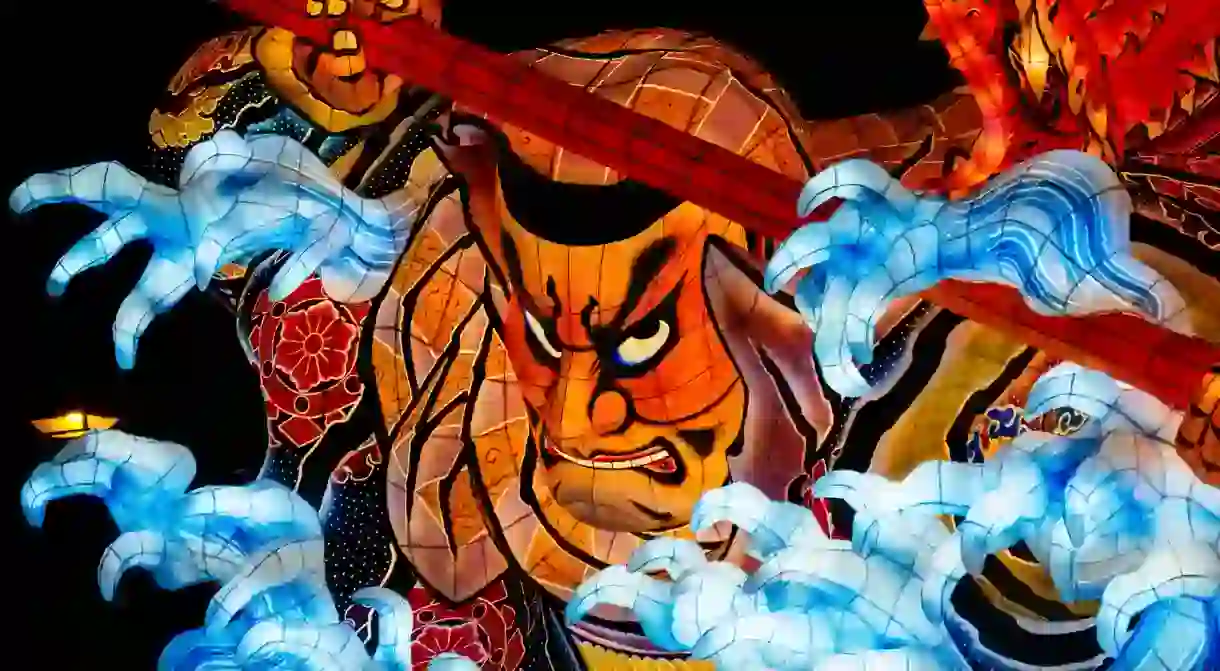Tohoku’s Three Great Festivals

Whether they are praying for a good harvest, honoring the dead, or celebrating the winter snowfall, the Japanese love to celebrate. Every region of the country has its own unique festivals in celebration of just about everything under the sun. Tohoku (also known as Northern Honshu), famous for its seaside villages, mountain landscapes, and fascinating local culture and traditions, is certainly no exception. We take a look Tohoku’s “Big Three” summertime festivals.
Nebuta Festival
Located in the city of Aomori, this festival runs for six days straight every year at the beginning of August. The nebuta are massive paper floats built to look like ancient warriors, each of which is surrounded by dancers in traditional garb called haneto. The dancers chant in a local dialect, beckoning visitors and passersby to come and join in on the festivities. This is the largest of Tohoku’s big three.
The true origin of the festival is unknown, though the most widely told story is that a shogun during the Heian era (794 – 1185) once used flutes and taiko drums to attract the enemy’s attention in battle, inadvertently creating a new tradition which would then become a yearly celebration. Another tale is that after the battle, the shogun forced his captors to bury their dead in the ground and then stomp on the dirt to ensure they are sent to the underworld; the stomping became a ritual that would eventually evolve into the contemporary haneto dance.

Sendai Tanabata Festival
Located in rural Sendai, the Tanabata festival dates back over 400 years ago, to the time of legendary warlord Date Masamune. Masamune, whose missing eye only added to his mystique and earned him the nickname “one-eyed dragon”, founded what would become modern-day Sendai city.
Today, the story of Masamune is honored in a more family-friendly manner; the entire city is covered in over 3,000 decorations made of bamboo and sasatake, a traditional Japanese paper also made out of bamboo. Local businesses decorate their shop fronts and many families participate by hanging small paper decorations in front of their homes, showing the communal spirit of the occasion. On the street, parades, live concerts, and fireworks provide entertainment throughout the day and into the evening. The festival is held every year on July 7.

Akita Kanto Festival
Held every year in Akita from August 3 to August 6, the Kanto Matsuri (literally, “pole lantern festival”) is a festival best known for its street performances. Performers use their bodies to balance bamboo poles of varying lengths with several lanterns attached to the end, each of which is lit by a real flame. The parade marches through the city accompanied by flutes and taiko drums while bystanders shout out a traditional Japanese chant.
While there are a number of activities and special events for visitors, the main events are the night parades, which take place every night of the festival for about 90 minutes. During the night parade, all of the kanto performers are gathered and given a chance to showcase their skills for the crowd. After the show, visitors have about 15 minutes to meet and talk with the performers, pose for a photo and, if they’re lucky, have a shot at balancing a kanto pole.














